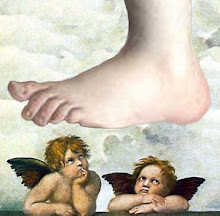Achilles Tendonitis
Achilles tendonitis is an inflammation of the large tendon in the back of the lower leg known as the “Achilles Tendon”. This tendon attaches your two calf muscles (the gastrocnemius and soleus) to the heel bone. Pain and tenderness may be present over part or all of the Achilles tendon, and is aggravated by activities applying force to the tendon, such as running and jumping. Achilles tendonitis is commonly associated with overuse, resulting in inflammatory and/or degenerative changes to the tendon. In some cases the pulling of the Achilles tendon may result in spurring or calcification of the tendon at the site of insertion at the back of the heel.
Who Gets It
Achilles tendonitis can occur at any age and is common in athletic individuals whose sport involves running and jumping. However, as we get older, the water content of the tendon diminishes, which causes the tendon to lose some of its resilience, making the middle aged to elderly population more prone to the condition. Poor circulation to the Achilles tendon contributes to the tendonitis being a chronic condition. In some cases a rupture may occur.
How Does It Develop?
Tendonitis develops when the tendon and/or sheath are exposed to excessive forces that cause it to be damaged. Achilles tendonitis may develop acutely after a sudden injury, or more commonly, chronically, over a period of exposure to low-grade stress. As the tendon is damaged due to abnormal forces, an inflammatory reaction begins causing pain and swelling. The cycle of damage and inflammation continues over a period of time. During this time the tendon sheath begins to thicken and the tendon degenerates and develops scar tissue. The tendon becomes weak and vulnerable to further injury at this time.
Symptoms
· Pain may be immediate or may begin gradually and worsen with activity
· Pain on palpation at the back of the leg, anywhere from mid calf to the bottom of the heel
· Pain on stretching the calf muscles
· Limping to avoid weight bearing
· Swelling may be localised or diffuse
· Hard “nodules” or “thickening” may be felt along the tendon
· Stiffness in the calf and tendon, worse in the morning and after rest
· Crepitus or creaking with movement along the tendon
Causes
· Physiological changes to the tendon tissue with age
· Overuse
· Poor or inappropriate training surfaces and regime
· Poor biomechanics of the lower limb and foot. These include: flat feet, tight calf muscles, leg length discrepancies, and high arched feet causing bowing or overload of the tendon.
· Inappropriate footwear: too tight across the back of the foot or not enough support
· Sudden change in exercise or rapid increase in intensity
· Direct trauma to the Achilles tendon
· Other causes include: arthritic conditions, nutritional, hormonal or metabolic abnormalities, which may affect the health of the tendon
Treatment
Treatment varies depending on the stage of the injury and the causative factor. The stage depends on whether it is a new “acute” injury, if inflammation is present, or if the tendon is already beginning to heal.
Aims: In the early stages they are to reduce pain and inflammation, avoid re-injury while its strength is low and try to maintain strength and flexibility of surrounding tissue (such as calf muscles).
These aims can be achieved by:
· Rest
· Physical Therapies: ice, heat, massage, electrotherapy (e.g. ultrasound)
· Anti-inflammatory medication
· Gentle calf stretches
· Change of footwear
· Heel Raise: short term
· Exercise program modification
Recovery
The speed and success of treatment will depend on how quickly the Achilles Tendonitis is diagnosed and how quickly treatment is commenced. If the tendonitis is recognised immediately before any significant damage is done to the tendon, one can expect to recover within 2-4 weeks providing adequate rest is maintained in this period. Those who have suffered tendonitis for any length of time before commencing rest and receiving any treatment will usually take much longer to recover. This time will vary from patient to patient but will generally be at least as long as the time the tendonitis has been active. This time allows for healing of damaged tissue, resolution of scar tissue and rebuilding of strength. In severe cases complete recovery may take up to 2 years.
Prevention
· Address any biomechanical abnormalities
· Warm up before and after exercise
· Address the cause: footwear, training regime or surface

No comments:
Post a Comment